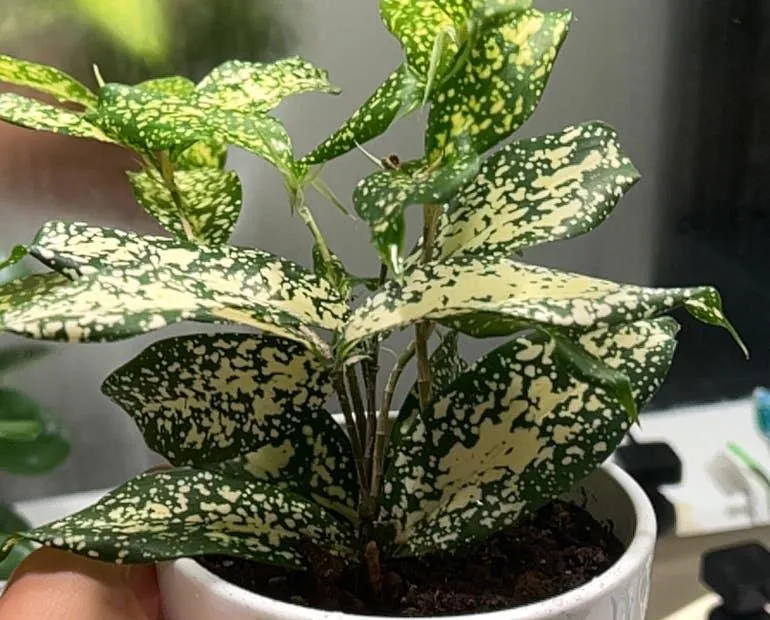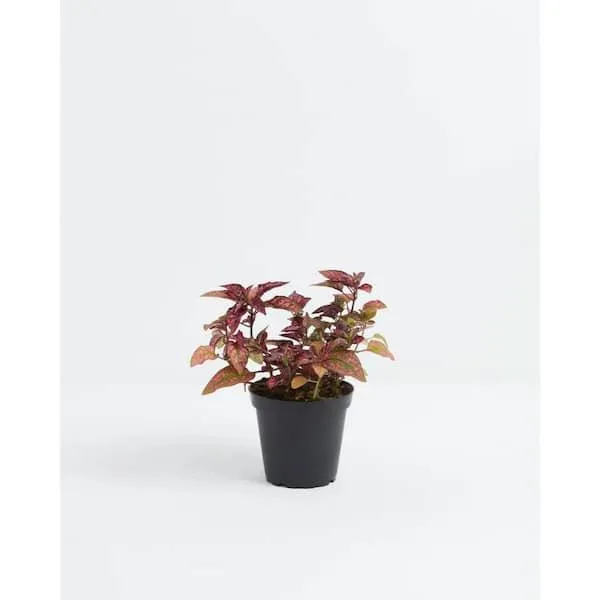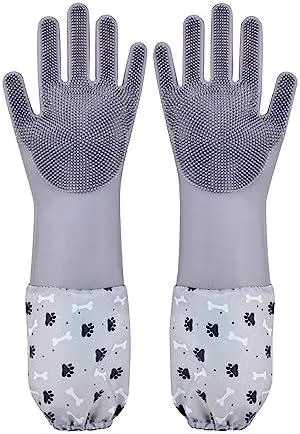Are Polka Dot Plants Safe for Cats?
If you have a polka dot plant (Hypoestes phyllostachya) in your home and a curious cat, you may be wondering – is it safe to have this common houseplant around feline friends? In this article, I’ll explore the potential risks polka dot plants pose to cats and provide advice on whether or not they can coexist safely.
Toxicity Risks
The first thing potential plant parents need to know is that several parts of the polka dot plant are considered mildly toxic to cats if ingested. Specifically, the stems, leaves, and flowers contain calcium oxalate crystals that can cause oral irritation and even swelling of the mouth and throat if chewed or eaten.
From my experience as a veterinarian, calcium oxalate crystal toxicity is one of the most common types of plant poisonings seen in cats. While the crystals themselves are not lethal, they can cause lasting discomfort and distress for curious kitties who taste test plants. Oral swelling makes eating, drinking, and playing difficult until it subsides.
At the same time, polka dot plants are not among the most toxic houseplants for cats. The mild calcium oxalate crystals they contain are unlikely to cause serious health issues in most cases – especially if only a small amount is consumed. Fatal poisonings are rare with this plant.
Risk Factors to Consider
Whether or not a polka dot plant presents a true danger depends on several risk factors related to both the plant itself and individual cat:

- Location: Plants placed up high out of reach pose minimal risk. Floor-level or low-hanging polka dots are more tempting for cats to taste.
- Appearance: The fuzzy green leaves resemble catnip and may attract cats looking to munch. Stimulating flower patterns could also spark curiosity.
- Cat behavior: Some felines are compulsive chewers and nibblers. Others avoid plants altogether. Consider your cat’s natural tendencies.
- Supervision: Constant vigilance over cats around plants is ideal but not always feasible. Risk increases with unattended access.
Weighing these risk factors helps determine if a particular polka dot plant presents an actual hazard in your home, or if precautions could minimize dangers.
Safety Measures and Alternatives
To enjoy polka dot plants safely with cats, pet parents have some options:
- Use a barrier: Place plants on high shelves, behind greenery-proof furniture or install a decorative fence to block access.
- Watch attentively: Only have polka dot plants out when able to supervise cats, then return plants to a secure room when unavailable.
- Choose non-toxic decor: Replace polka dot plants with cat-friendly options like snake plants, pothos or peace lilies that pose no health risk.
- Give alternatives: Provide interactive toys, catnip toys or scratching posts to redirect chewing urges away from plants.
Basically, with care and preventative measures like those above, concerned cat parents can find safe ways for their felines and polka dot plants to peacefully coexist indoors.
Real-Life Situations
As a veterinarian, I’ve seen firsthand how these precautions can spare both pets and plants harm. For example, one client securely displayed her polka dot collection on a tall shelving unit out of reach of her rambunctious kitten. Problem solved!
Another installed a decorative trellis to enclose her floor-level plants after her cat munched a leaf, causing mild throat swelling. A trip to my clinic for anti-inflammatory medication ended the bout of calcium oxalate crystal toxicity without issue.

In cases where responsible barriers and supervision prove impractical long-term, non-toxic alternatives provide a safer solution. Kind of like trading in catnip for a toy feather wand! With the right adjustments indoors, animal and plant parents can harmoniously coexist.
Final Thoughts
In summary, while polka dot plants contain mild toxins risky to curious cats, the danger they pose depends a lot on individual circumstances. With precautions and preventing access as needed, feline friends and these fun houseplants can learn to peacefully coexist.
Ultimately, concerned pet owners must weigh their own lifestyles and cat behaviors to determine if polka dot plant safety is worth the effort. But with creativity, even riskier plants may find an appropriate place indoors – as long as we protect our pets first.
I hope this overview has helped answer your questions about polka dot plant safety. Please let me know if any other issues come up caring for cats and greenery at home!
Polka Dot Plant Care and Safety for Cats
| Common Name | Botanical Name |
|---|---|
| Polka Dot Plant | Hypoestes phyllostachya |
| Toxicity Level | Symptoms of Poisoning |
| Low | Mild gastrointestinal upset if ingested by cats |
| Safe for Cats? | If Not Safe, Reason |
| Yes, but monitor interactions | May cause minor upset if eaten, but not generally harmful |
| Care Tips to Ensure Safety | Alternative Safe Houseplants |
| Keep out of reach, monitor play, wash hands after touching | Sansevieria, ZZ plant, Chinese Evergreen, Peace Lily |
FAQ
-
Is a polka dot plant poisonous to cats?
Yes, a polka dot plant (hypoestes phyllostachya) can be quite harmful to felines. Most parts of the plant contain substances that can cause difficulties for cats if ingested. However, it doesn’t normally trigger reactions in humans or dogs.

-
What happens if a cat eats a polka dot plant?
If a cat eats pieces of this plant, it may experience vomiting or diarrhea. Additionally, the cat’s mouth could become irritated. More serious issues can potentially arise too, like an upset stomach or even kidney problems in severe cases. So it’s best to keep polka dot plants up high or in a room where cats can’t reach them.
-
Are there any symptoms to watch for?
Pet owners should keep an eye out for signs that their cat may have nibbled on a polka dot plant. Key symptoms can incorporate drooling, troubled breathing, stomach pains, or not eating. Cats chewing on plants are sometimes hard to catch though. If unsure, it won’t hurt to check in with the vet, on the off chance that a small amount was eaten.
-
How do I protect my cat from a polka dot plant?
To guard your feline friend from any problems, maintain the plant in a protected region far from paws’ reach, like on a high shelf or behind a baby gate. You can also try hanging plants instead of keeping them on the ground. Another option is to install sticky pads or aluminum foil below plants to discourage investigating. Some cats can’t resist a new leafy smell, so vigilance is best.
-
Are there any safe houseplants for cats?
Luckily there are a number of plants that are basically safe for cats. Spider plants, bamboo palms, english ivy, and peace lilies can all be good choices. Snake plants and pothos vines are also usually not a problem. It’s still wise to do your research though, as some cats like to nibble on anything within reach. Playing it safe is always the best policy when it comes to houseplants and our furry friends.
-
What should I do if my cat eats polka dot plant leaves?
On the off chance that your cat unfortunately does consume pieces of a polka dot plant, stay calm and call your vet right away. They may want you to bring the cat and a sample of the plant in for an examination. Often it’s best to induce vomiting within half-hour of ingestion, with hydrogen peroxide or syrup of ipecac under vet guidance. Symptoms should also be monitored and treatment given if needed. Don’t hesitate to contact an expert for advice in these kinds of situations.

In summary, while polka dot plants can look nice in a home, it’s best to keep them out of reach of cats. Their curious natures sometimes get the better of them. With some preparation and precaution though, feline friends can be protected from potential plant dangers. Trusting a vet’s counsel is also wise if any concerns arise.
